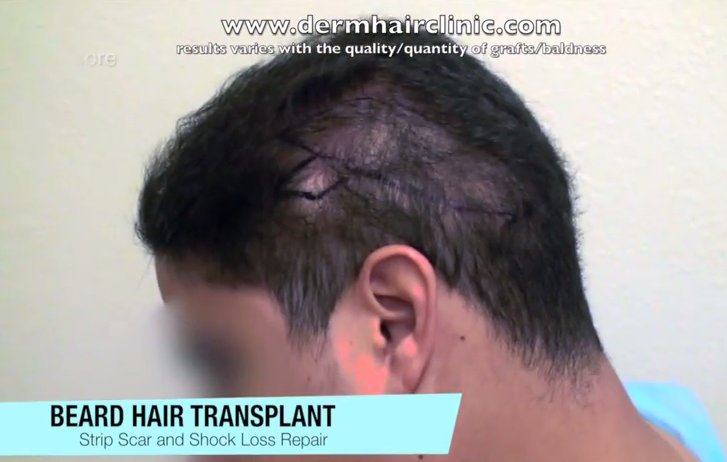Areas on the scalp which are most susceptible include those which show signs of significant thinning. This is typically indicative of miniaturization at the follicular level.
There are a few options that physicians who specialize in Follicular Unit Extraction or strip surgery may choose to undertake in order to prevent or reduce the chance of shock loss occuring.
(1) use of medications
Currently, there are two FDA approved medications which are used to help manage androgenic alopecia.. These are Rogaine (Minoxidil) and Propecia (Finasteride). These can be used to help limit the progression of miniaturization which is induced by the presence of DHT. And the use of such drugs can help increase the resilience of follicles to the impact of surgical instruments. In a 2002 study published in the dermatologic surgery journal, Dr U and his co-authors demonstrated that using minoxidil for a 2 weeks before and 4 weeks after facelift surgery was effective in preventing the common side effect of temporal area hair loss.
(2) improving graft density on the scalp
A surgeon may anticipate a certain degree of shock loss after follicular unit extraction in a particular area of the recipient scalp. Therefore, he or she may decide to insert an appropriate number of grafts to help compensate for this. In so doing, this may increase the overall density until the miniaturized shafts actually fall out.
(3) minimizing the risk of transection
Certain types of instruments may be used to help prevent the risk of transection as much as possible. For example, at some clinics, magnification may be used to help improve the accuracy of using Follicular Unit Extraction punches. Here at Dermhair Clinic, our uGraft technology uses an outward curved cutting axis, not a straight one. This offers a higher degree of safety in positioning the circular punch around each follicular unit.
Diffuse Thinners and Shock Loss After Follicular Unit Extraction
Some patients with androgenic alopecia experience global thinning instead of the classic patterns of male pattern baldness. There are two categories of diffuse thinning:
(1) DUPA (diffuse unpatterned alopecia)
(2) DPA (diffuse patterned alopecia)
These individuals are often susceptible to shock loss after folliclar unit extraction or strip surgery. And conventional hair transplantation can be challenging since diffuse thinning patients often lack a stable source of grafts on their scalp.
Therefore sufficient coverage may be attained through the use of body hair grafts. This requires a more specialized harvesting process known as Advanced Follicular Unit Extraction.
The insertion of follicles taken from the body can also help compensate for loss of hair due to shock or trauma during the surgery. With proper planning and execution, it is possible for patients who are susceptible to losing their native hair to enjoy abundant coverage throughout their scalp.
Concerns over shock loss after FUE hair transplant should be discussed with the surgeon prior to a hair transplant procedure to discuss methods for mitigating this risk. Therefore, it is advised that patients who plan to undergo hair transplantation become familiar with various options available for addressing the possibility of shock loss after surgery.

